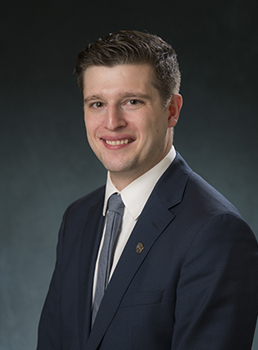
America’s higher education ecosystem faces many challenges. Declining state support, changing enrollment demographics, and increasing costs comprise the abyss into which many higher education leaders stare. Yet, America’s popular understanding of what it means to go to college is deeply mistaken, confusing the debate on how to move things forward and where to invest limited resources. I’ve spent the last 15 years of my life steeped in higher education as a student, university admission officer and elected member of the University of Colorado Board of Regents representing Denver. I’d like to share a sense of where higher education is now and provide an example of a path forward.
Let’s start with getting into college. For the most part, it is easy for a high school graduate to get into a college. Paying for college is the hard part. They do not graduate mostly because they cannot afford to continue or even start their degrees. We should stop stressing so much about students getting into college and instead focus on making college more affordable for them.
But what about getting into a prestigious college? Sure, being perfect, having family wealth, and winning the lottery to get into an elite institution can make a huge difference in an individual’s life. But elite institutions educate a small fraction of America’s students. Despite this, the constant chasing of prestige by university leaders at non-elite schools is a fool’s errand that distorts institutional priorities away from serving the public and towards serving the egos of administrators, alumni and faculty. If there was ever a list of America’s top universities that did not have the usual names at the top, would people believe it? No. As such, many university leaders at everyday institutions trying to clamber up the rankings are playing a game they’ve already lost, while simultaneously hurting their chances to win support from taxpayers.
2019 marked the first time public universities nationally received more funding from tuition than from taxpayers (unfortunately, CU passed this threshold many years ago). Despite this, few university leaders ever cease to brag about how “this year’s freshman class was the most selective and talented ever.” Sounds good, right? But it is just another way of saying, “aren’t we great for denying all these other students”? Legislatures and governors the nation over have caught on and state support for higher education is often the first thing cut when public spending gets curtailed. If university leaders want to get their taxpayers’ support, they need to stop bragging about how shiny their ivory towers are and start talking about how their institutions are engines for middle-class economic mobility.
How about the students on America’s campuses–are they the stereotypical wide-eyed 18-year old coeds? Not anymore. In America today, there are more parents enrolled in college than there are students living on-campus. We need to reframe the conversation around this reality and stop imagining every student’s college experience as one where teenagers freed from the tyranny of mom and dad find themselves amidst the backdrop of a bucolic campus quad.
So where do we go from here? Universities like CU Denver provide a roadmap. With a commitment to access and affordability, CU Denver is one of our state’s most powerful engines of social and economic progress. A new type of college ranking from Georgetown University researchers measures schools for return on investment. Their results show a bachelor’s degree from CU Denver as the second-best value for a four-year degree in the state. And the campus, situated at the heart of our state’s political, social, and financial epicenter is well-positioned to produce talented and experienced graduates for decades to come.
For a university, CU Denver is a very diverse place. International students and students of color comprise over 50% of CU Denver’s undergraduate student body and first-generation students make up 46%. The percentage of Latino/a/x undergraduate students at CU Denver is now 25% and federal designation as a Hispanic Serving Institution is anticipated. The average age of a CU Denver undergraduate student is nearly 24. The campus is already serving today’s modern students and is well-positioned to capitalize on our state’s diversifying demographics. While the campus does ensure admitted students can succeed in college, it does not turn away otherwise qualified applicants out of a drive for prestige.
The CU Denver Promise Grant guarantees students coming from families below the federally established poverty level can attend CU Denver without incurring debt. And despite popular belief that college costs are ballooning, adjusted for inflation, a CU Denver degree is more affordable now than it was in 2016 for families making less than $100,000.
If we want our higher education system to work well for all students and not just traditional wealthy students, we need to all pay more attention to the CU Denver’s of the world. The elite and legacy institutions educate a small fraction of America’s students and have no interest in growing. Yet they consume so much of the popular imagination around what it means to go to college. They are not the answer. Burgeoning schools like CU Denver which are diverse, accessible, affordable, and located in our regional centers of influence provide us with the best opportunity to expand the promise of America’s higher education system.
Jack Kroll is the elected CU Regent from the 1st Congressional district, including Denver

Be the first to comment